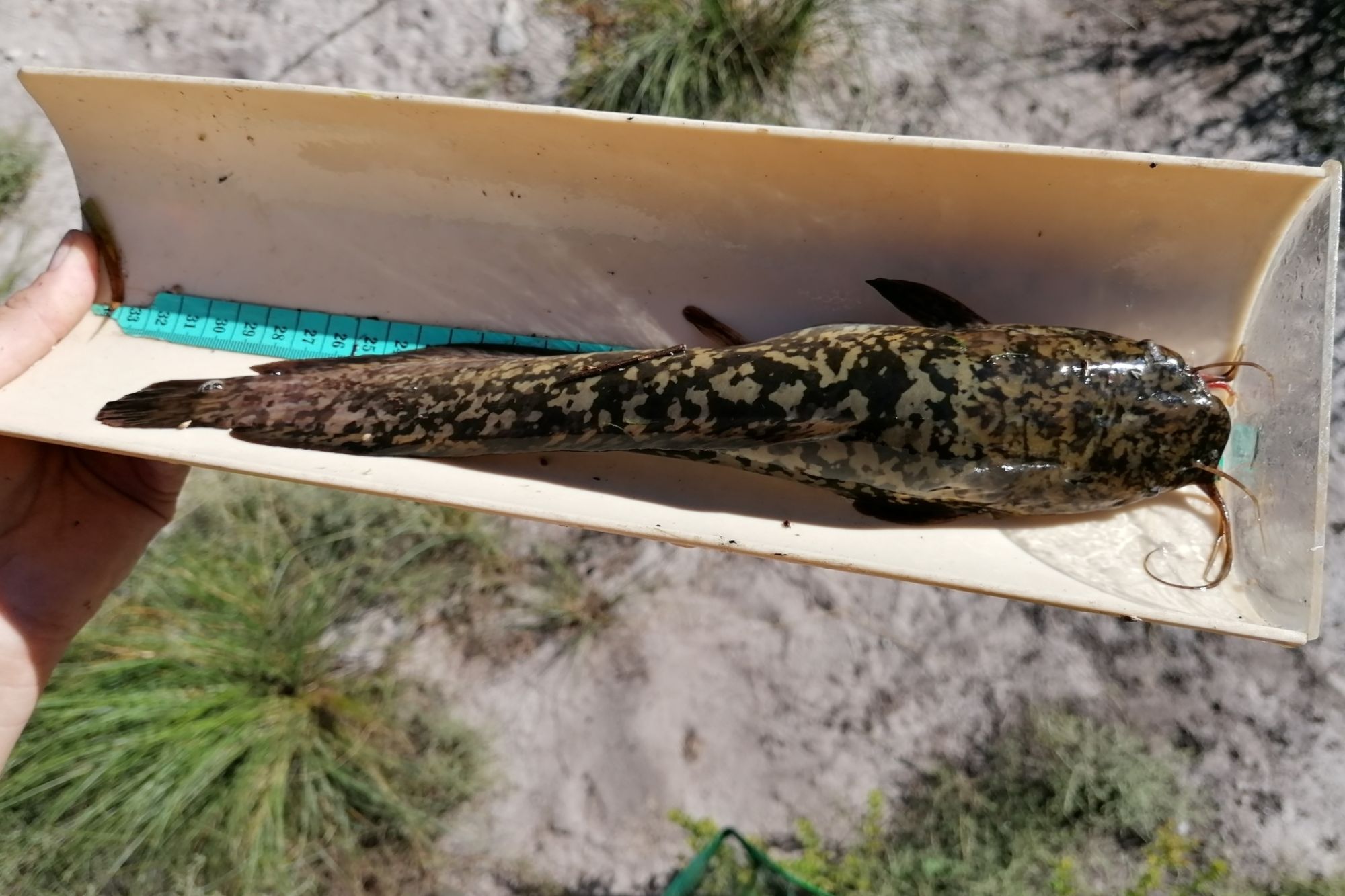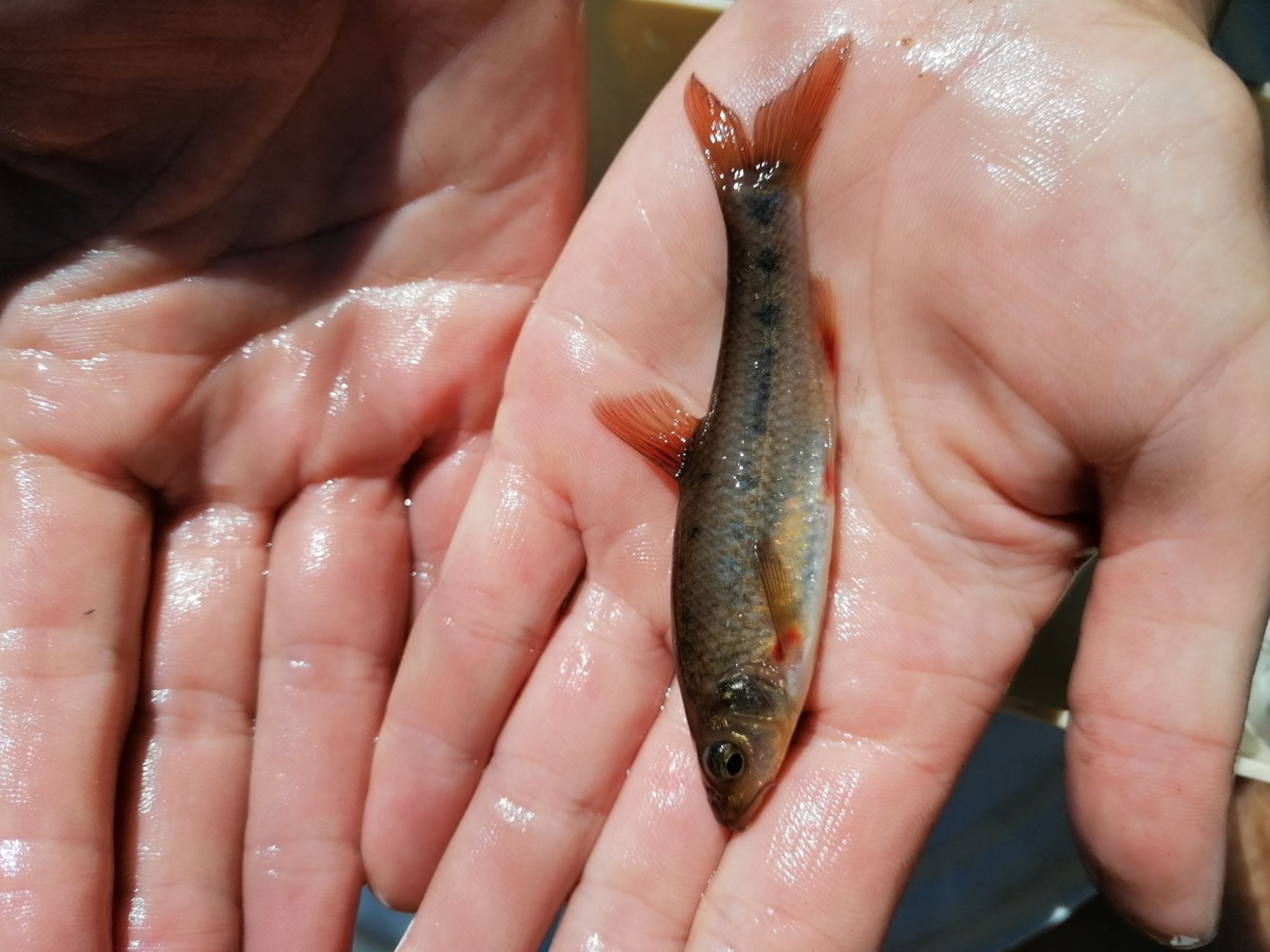
Catfish on the move in the Cape
Sharptooth catfish Clarias gariepinus are rather remarkable creatures indigenous to the northern parts of South Africa but both alien and invasive in the Western and Eastern Cape. They are omnivorous feeders, and as such can have negative impacts on indigenous fish populations as they can eat large numbers of young fish. They also have high fecundity (can produce many offspring) and survive in a wide range of water quality conditions. In addition, they possess a primitive accessory air-breathing organ that enables them to survive out of water for hours or even days, provided their skins and gills stay moist. The downside is that these characteristics enable sharptooth catfish to be very successful invaders and cause severe ecological impacts in areas where they are introduced.
Sharptooth catfish are unfortunately widespread in the mainstream habitat of many Western Cape rivers, most notably the Berg and Breede systems, and there is scientific evidence that they can also invade tributaries and headwater streams. These streams are very important from a conservation perspective as they provide a safe haven for indigenous fish species that have been extirpated from mainstream habitat by alien fish and loss of habitat.
CapeNature monitors the presence and impacts of sharptooth catfish at a number of sites including the headwater streams of the Gobos River, a tributary of the Riviersonderend River which flows through the town of Greyton. Monitoring thus far has indicated that viable populations of all three resident indigenous species persist but that sharptooth catfish have invaded up to the furthest upstream sampling site. High variation was observed in indigenous fish numbers between sampling events, and impacts such as drought and fire could have played a role. In contrast, indigenous fish appear to be absent from the main Riviersonderend River where catfish are common and well established. Catfish have also successfully breached the invasion barrier in the Witte River in Bainskloof where they potentially threaten the indigenous fish population in upstream areas. Monitoring to record their impacts and to underpin future conservation interventions will be initiated soon. Similarly, following the good rains in many parts of the Gouritz system, catfish sightings were reported from areas where they have not previously been recorded and a monitoring project is also proposed for the Groot River in Meiringspoort.

A juvenile Sharptooth catfish

A Breede River redfin is one of the three indigenous fish species in the Gobos River.
How can I assist you today?
How can I assist you today?